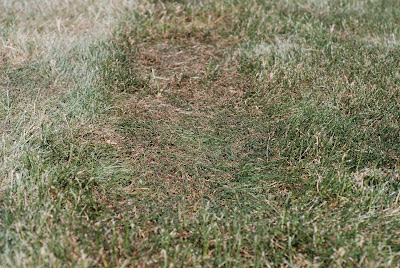Japanese beetle monitoring traps confirm early season in 2012
As anticipated, Japanese beetles are out early this
year. The first beetles were captured in
central Indiana during the week of May 14-18. (This is nearly a month earlier
than most years.) We expect Japanese
beetles to arrive in full force in this area within the next 2-3 weeks.
 Because we have never experienced such an early
spring, it is difficult to predict just how the beetle populations will
respond. We know that the beetles are
active early but we do not know if this means that they will be with us longer
into the summer or not. Also, keep in
mind that dry conditions do not favor beetle emergence but a significant
rainfall event could potentially shift emergence into overdrive.
Because we have never experienced such an early
spring, it is difficult to predict just how the beetle populations will
respond. We know that the beetles are
active early but we do not know if this means that they will be with us longer
into the summer or not. Also, keep in
mind that dry conditions do not favor beetle emergence but a significant
rainfall event could potentially shift emergence into overdrive.
It is safe to say that we need to prepare now,
however.
Protect susceptible plants, especially those that have
been recently transplanted or those that are stressed for one reason or
another. Favorites host plants for Japanese beetles include linden, crab apple,
plum, and other fruit trees, rose bushes, grapes, and several garden variety
vegetables.
Grub preventative applications probably cannot be
applied too early this year. The newer long lasting grub control products will
be a great advantage this year because we do not know exactly how long the
grubs will be feeding on the turfgrass.
If dry weather continues, oviposition and grub feeding
may be concentrated in irrigated turfgrass.
With all insecticides, either for adults or for grubs, it is critical to follow the label directions exactly
when making applications.
























